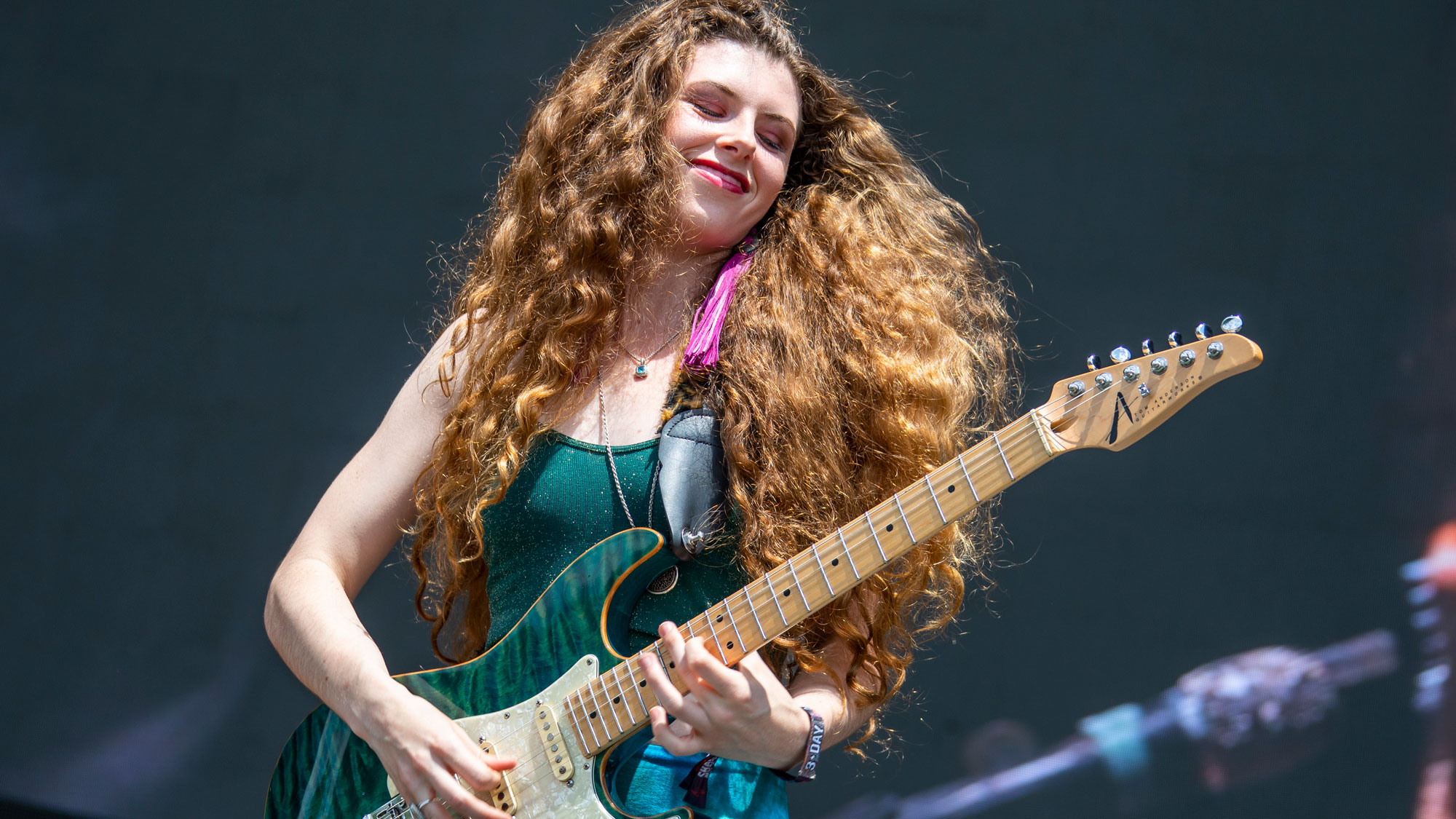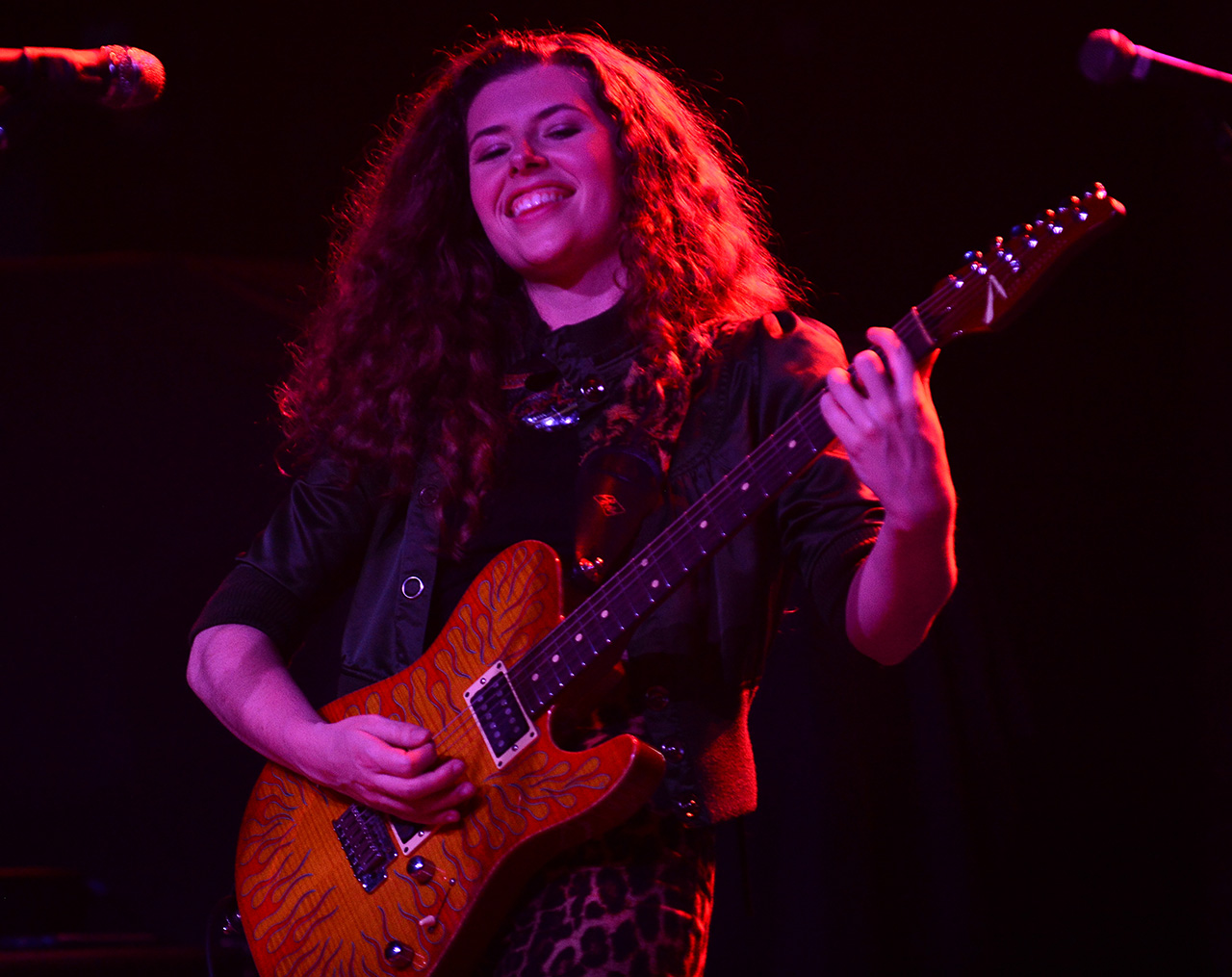
Hannah Wicklund turned 27 while she was opening shows for Yes and Deep Purple on their summer tour. It means she’s the same age as her idols Janis Joplin and Jimi Hendrix were when they died.
“Actually, I think this is definitely my favorite age,” she tells Guitar World. “At this point I know who I am and I just feel really, really confident.”
She has good reason – she’s has a deal with Anderson Guitars to help celebrate their 40th anniversary, and they let her paint customized versions of her Drop Top Classic, aka The Forest Fairy. She’s also preparing to her first live record, Live at the Troubadour.
“I feel settled,” Wicklund says. “‘Settled’ is the right word for not only my playing but the way I’ve carried myself. I quit drinking this year and I’ve plugged back into myself completely as a human and artist. I feel very happy and assured on my path.”
A talented guitarist, but one who often shied away from asserting her feminine side, she couldn’t have imagined at the beginning of the year that with her instrument slung low and a pink dress flowing around her, she’d become an influence for young women aspiring to play.
“It’s very exciting to share this live record because I’ve always been confident in my live show,” Wicklund sayd. “I’ve been performing since I was a child and I’ve always been proud – but that show, combined with the connection with the fans, is extra special.”
You’ve just gotten off tour with Deep Purple and Yes. What did that experience teach you?
“It was a fun tour to be on. They asked me to play solo; I think being two very guitar-heavy bands, they wanted a slightly less guitar solo act to open up. I broke out my Gibson Custom Shop ES-359. I leaned more into my songwriter ream and shared a little bit of casual, story-time-type stuff.
“Steve Howe is such a creative guitar player. It was fun checking out all his gear. He really made the case to me for the guitar stand. You know… the one where your guitar is actually standing! It allows you to move over and play something else quickly.”
What have you learned about yourself as a guitarist?
“When I was young I thought playing fast was important. I was a faster player then and that was my goal. But my instincts in life now are to slow down and move more thoughtfully – and a little bit more gracefully. That’s really translated into my guitar playing.”
Have there been any upgrades to your rig?
“I just adore Anderson guitars. Tom Anderson is such a great guy who cares so much. He’s at the shop every single day. So my rig is pretty much the same – I’m a deeply loyal person, not only to Anderson, but I love my Orange Rocker 30, which I reverted to this year. It’s the first amp I had as a 10-year-old. My tiny rig, I think, has a better tone than my bigger one.”
I felt like I had to step into this masculine role every time I walked into a music venue in order to feel respected
You’ve got an interesting collaboration happening with Anderson, right?
“I’m going to be painting the backplates for two guitars for their anniversary limited edition series. It’s basically recreating their most iconic guitars. I’m really honored that when they chose mine, the Drop Top Classic, they asked me to name it. I’ve dubbed it The Forest Fairy – a nod to my perfume that I launched this year.
“The palatability of Anderson is completely unmatched. I picked one up when I was nine; their necks are really tapered and slim, and they have the cutaways on the body, so they just kind of hugged me. As a young girl it was extremely comfortable. One of my dad’s friends sold me one for half of what it was worth. It let me get into nice rigs as a little kid.”

Gear aside, what’s been the biggest progression in your playing?
“One of the things I’m proudest of as a songwriter – and as a human – is that I’m very open and honest. I’m very giving with my stories and with my emotions. It’s nice to for that to be well-received.
“By releasing The Prize and touring that record over 65 shows, I got to connect with a lot of young women for the first time in a much deeper and more profound way. The Prize was really about me coming into my own: about that transition from girlhood into womanhood, and about embracing my femininity again.
“Being a ‘woman in rock,’ I didn’t feel very feminine. I felt like I had to step into this masculine role every time I walked into a music venue in order to feel respected. That message really resonated with women in a way that I didn’t expect it to. That was really propelling for me this year, and while playing these songs.
“I felt more and more assured and rooted in my experiences. It’s not always been easy, but it’s fun having women connect with my music, and telling me it helped them embrace their femininity to see a woman play guitar while wearing a tiara. I would have thought it was silly six years ago – but to know it means something to people is really heartwarming.”
Live at the Troubadour documents part of that journey.
“It was a long time coming! I think seeing anybody who’s a real player play life is a totally different experience, and I don’t think I’m any different. Just in terms of jams, I’ll extend certain songs and solos, but I also love to go on a whim and take risks that will be shaped into jams. It was important to capture that and share it with people.”
- Live at the Troubadour is released in January, and available for preorder now.





!["[T]he First and Fifth Amendments Require ICE to Provide Information About the Whereabouts of a Detained Person"](https://images.inkl.com/s3/publisher/cover/212/reason-cover.png?w=600)

